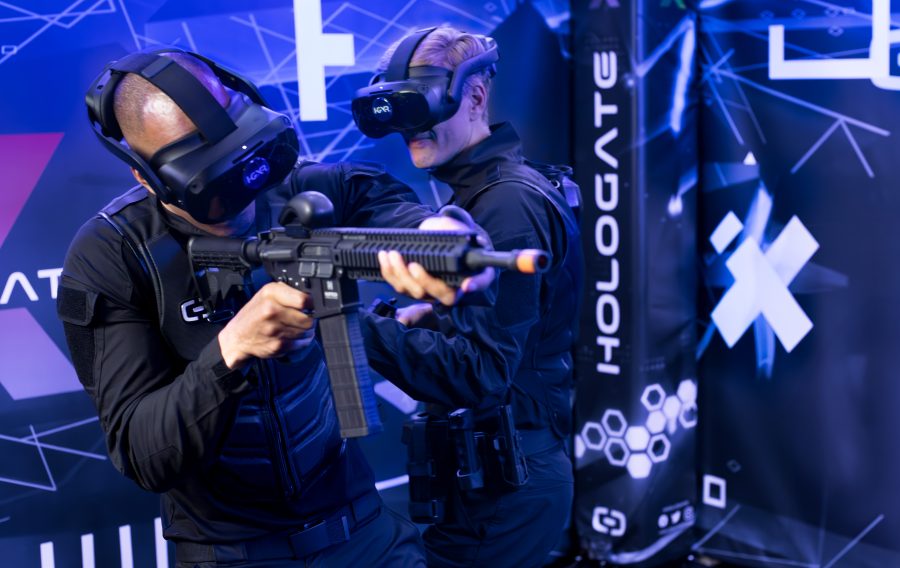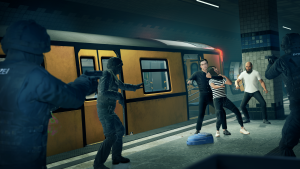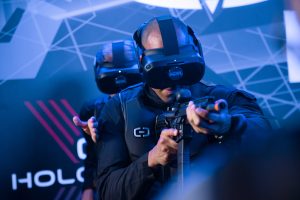
The defence sector is continuously transformed by new technologies and to mitigate the risks of falling behind innovation, military organisations are often the early adopters of emerging technologies, says Thomas Dexmier, AVP of Enterprise Solutions EMEA, HTC VIVE. In the UK alone, the Ministry of Defence intends to invest £6.6 billion to 2025 in defence research and development, with specific focus on emerging technologies.
Immersive technology like Extended Reality (XR) is increasingly becoming an essential part of the Defence industry, from immersive training for infantry, naval and armored specialists. As part of updated simulators in a £27 million refit, the Royal Navy has included immersive technology elements with XR headsets.
Reducing costs, saving time and safely creating reactive scenarios in training that are difficult to simulate physically outside of active combat zones – immersive technology is the advantage militaries and defence forces need to increase skills.
But what makes it so effective? Arguably one of the biggest advantages of XR-based training is that it can be repeated in a safe and controlled environment. And you can simulate endless scenarios without the cost and time associated with setting up physical drills for large groups – whether it’s close-quarter battles or complex counterterrorist missions. 
XR also benefits from advances in what’s called “location-based experience” technologies. This basically means multiple concurrent users active in the same live environment, with the ability to interact with real and virtual objects, as well as each other – all in real-time.
This is especially important in military and defence field training where groups of personnel are required to train as one unit, moving dynamically through spaces as they practice tactical drills. And it’s not only people that can be tracked in virtual training environments. XR Trackers can be placed on weapons and other objects so that real-world obstacles and equipment can be used, creating realistic environments for trainees to navigate.
XR technology is being leveraged all over the world, as the backbone of advanced simulations and training to keep skills sharp and make the difference in critical situations – so I’d like to share some fascinating examples.
In a recent study from HOLOGATE HGXR with the German Army, soldiers from different branches of the German Army regularly tested the system in Meppen on a 200m2 space to assess its military efficacy for action training, using VIVE Focus 3 headsets. There have been very positive results from the VR-based military training being used over the last three years. 97% of soldiers taking part in XR training claimed it added real value, while 85% reported a clearer understanding of critical processes. 
The British Army and the Royal Navy are both using the technology to create scenarios in training that are difficult to simulate physically outside of active combat zones. With the threat landscape evolving, military training needs to evolve to meet new challenges on the battlefield.
The British Army used a free-roam immersive training experience, with weapons and tools which are identical to their real-world counterparts. Trainees have total free movement, while instructors can see exactly what each trainee sees, and provide real-time feedback for accurate performance measurements and instant corrections.
Beyond tactical combat drills, we’re also seeing XR training being applied to other critical functions of military organisations. Australian forces used FLAIM and VIVE for an immersive countermine and explosive hazard awareness training system, upskilling their engineers in an immersive and realistic setting previously unattainable in practical real-world demonstrations.
Policing has also benefited from XR technology. Mexico City police training with wireless VR technology including the VIVE XR Elite, location-based software, and a private 5G network, with accurate replicas of real-world weapons. Trainees experience increased mobility, greater reliability, and realistic simulations that enhance decision making, response time, and overall readiness for real-life situations. The Berlin and Swiss police forces have also recently adopted XR solutions for training.
And the potential of immersive technologies extends far beyond the skills development of personnel. The automotive industry regularly uses XR as part of vehicle design, while architecture firms use it for creating details 3D models of buildings – all while adhering to real-world physics. 3D modelling of new vehicles or buildings can be quickly tested, and even examined on a 1:1 scale – something previously impossible to do.
We understand that confidentiality is critical, which is why we have various ISO certifications around privacy and security. It’s partly how we were also able to work with NASA and the ESA to be the first to have a functioning VR headset on the International Space Station, just last year.
It’s incredible to see how XR technology is taking everything to the next level, delivering realistic scenarios which would be hard to replicate in real-world training. What’s more, it keeps people safe, and reduces costs, while giving the ability to train in complete privacy.
If you would like to join our community and read more articles like this then please click here








